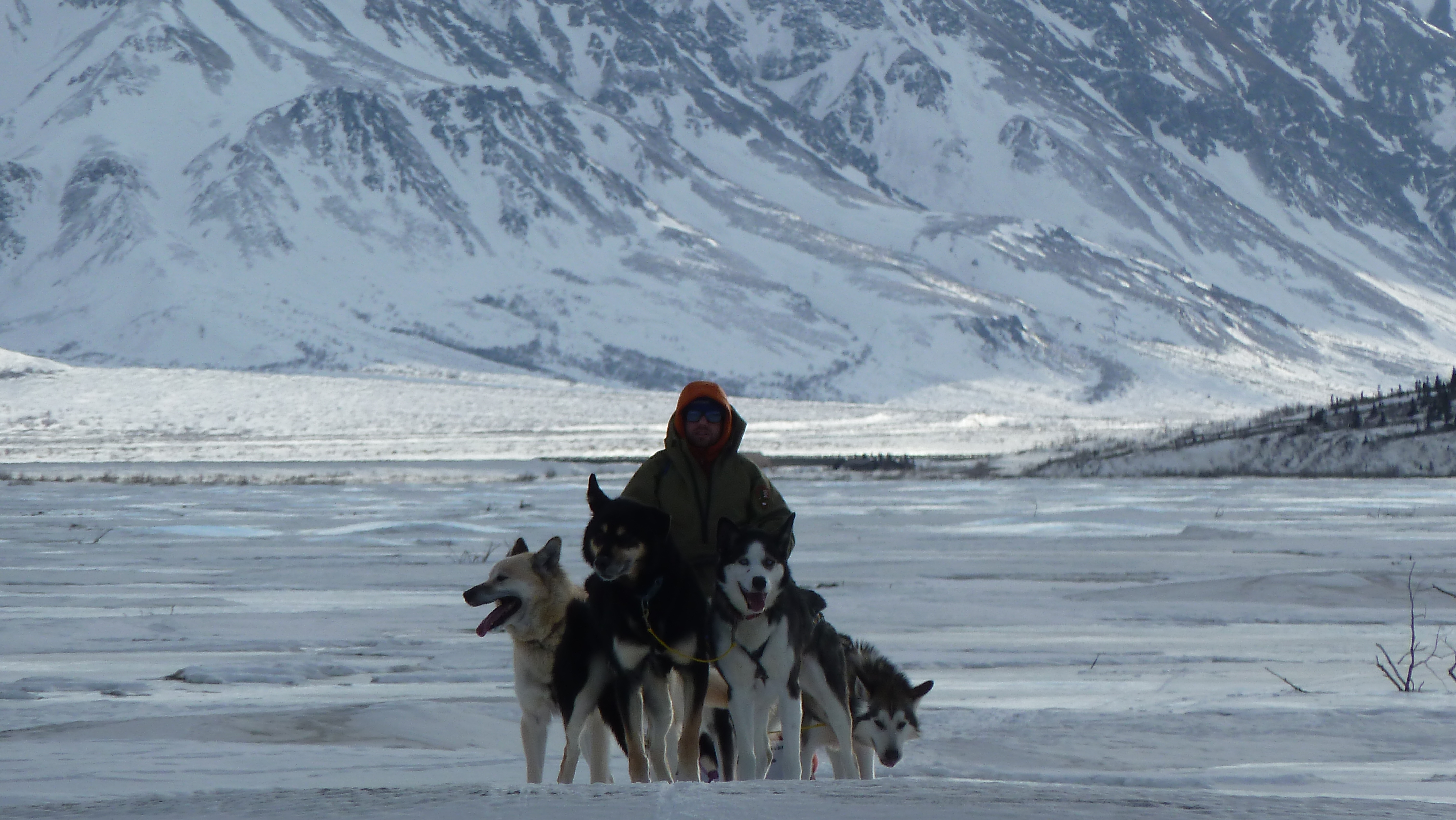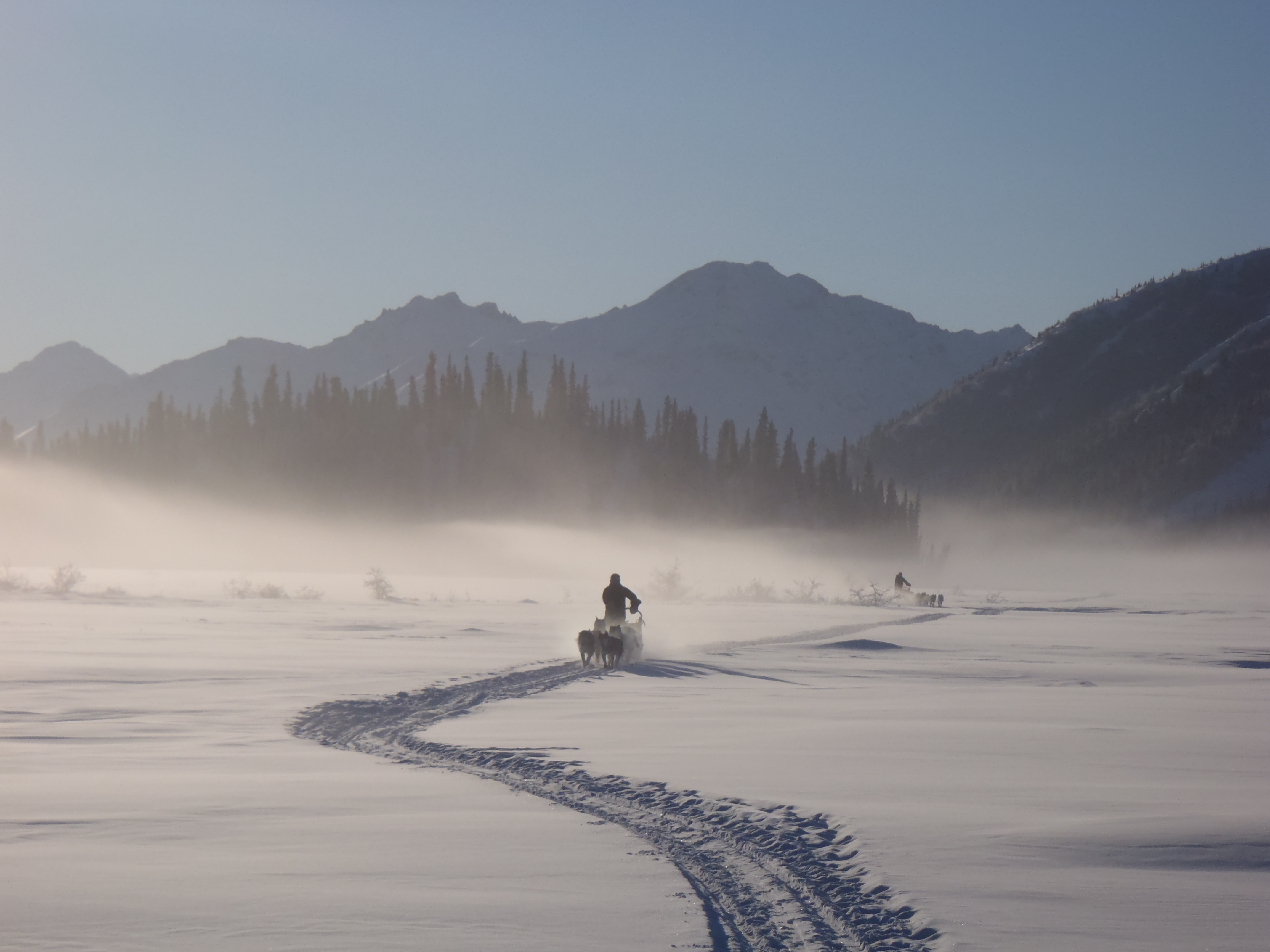Wolverines are a rare sighting anywhere in the world and Denali National Park is no exception. It's difficult to say for sure, but with its ease of backcountry wilderness access, Denali could be one the best places in North America for travelers to see wild wolverines. Still there are typically fewer than five wolverine sightings reported each summer. In September of last year I saw a wolverine in the wild for the first time. I started searching for information on wolverines in Denali. I quickly determined that very little is known about Denali's wolverine population, in fact the only thing that we can be sure of is that wolverines exist here. In November I pitched the idea of doing a small wolverine study to my supervisor, she agreed that it was a good idea and since that day my life has been consumed by this project.
The Project
The wolverine (Gulo gulo) is the rarest mammal in North America (Banci 1994). Healthy wolverine populations require large undeveloped tracts of land, persistent spring snow pack, and refugia. Wolverines are the least studied large carnivore in North America, primarily due to their life history characteristics. Wolverine populations serve as an indicator of overall ecosystem health and a measure of wilderness function (Schwartz 2011). Global climate change could have detrimental effects on wolverine populations, even in wilderness areas (McKelvey In Press). Unprotected wolverine populations are dependent upon emigration from source populations for persistence (Banci 1994, Krebs et al. 2004, and Squires et al. 2007). Establishing baseline population data in designated wilderness where historical wolverine populations are still thought to be intact will allow us to gain insight on the overall ecosystem health of that particular wilderness (Schwartz 2011). These data may also be extremely useful for understanding the population dynamics of wolverines in wilderness areas where historical wolverine populations have been diminished (Squires et al. 2007). Furthermore, establishment of baseline population data within designated wilderness would be helpful to biologists managing wolverine harvests in non-wilderness areas.
The preceeding paragraph was taken directly from my research proposal. My take home message here is: 1) Even in prime habitat wolverines occur at low densities 2) These animals are extremely elusive and difficult to study 3) We currently know very little about the wolverine population here in Denali 4) The knowledge gained by studying wolverine populations here in Denali may be also be useful to wildlife biologists in many other places.
In order to study wolverines in Denali's wilderness I am using remote camera stations. Wolverines have unique markings on their chests, and the cameras are set up to get pictures of these unique markings. Photographing the chest of a wolverine is very much like taking its fingerprints for identification. With any luck, I will also be able to determine the sex of individual wolverines that are photographed and if it's a female whether or not she had young this year.
The Kennels
In order to study wolverines you need to go where they live. This is no simple task in the summer, let alone in the winter. The date varies from year to year but at some point in the fall the park road beyond headquarters (Mile 3) is no longer open to motorized traffic. This situation provides unique opportunities for park visitors to experience the true solitude and tranquility that Denali has to offer once the snow flies, requiring only a short ski or snowshoe hike from park headquarters. However, setting up research sites 60 miles out into the park becomes more of a challenge the with closing of the road, and because I am studying wolverines in wilderness areas, motorized transportation is not an option. This is where Denali's sled dogs come in, and fortunately for me, Jen Raffaeli the kennels manager was also very excited about this project. Jen assured me that they (the two-legged and four-legged kennels staff) could get me where I needed to go.
On a balmy mid-January day at thirty below zero we loaded three sleds, hooked up 22 dogs and headed west into the park. We spent eleven days setting up remote camera stations with in temperatures that ranged from highs of -25 (yes, the high was still well below zero) to lows of -46. While working on various wildlife research projects in the past I have used boats, trucks, ATVs, snow machines, bush planes, and helicopters to get from point to point, but this was my first time using dogsleds. There is no question why we still need sled dogs in this park, as they are without at doubt the most reliable form of winter transportation that I have used. There is no motorized form of transportation that could have operated as reliably as dogs in the temperatures and terrain that we encountered during that trip.
I would also like to add, for those that have an idea that running dogs is as easy as standing on the runners and telling the dogs which direction to go, you can be assured that the word "easy" is nowhere in the equation. At the beginning of the trip I remember Jen saying something about sled dog boot camp. We started the trip with two sleds tethered together, Jen on the front sled and I was on the drag sled. This was my introduction to mushing with the Denali Kennels. There were times during that first day on the drag sled that Jen was calling to the dogs, "Let's go! Let's go!", and at some point it occurred to me that she wasn't just calling to the dogs, but I was fairly certain she was calling to me too. The dogs demand that they are not the only ones working hard, but they do give you a break once in a while if they feel you've earned it. Every dog has its own personality and it seemed to me that managing all those personalities is as mentally taxing as the job is physically taxing. Watching the dogs work was an incredible experience.
I'm not sure I can pinpoint the feelings of standing on the runners and not being able to see the lead dogs clearly through the cloud of dog breath while silently traveling down a frozen river. I certainly will never be able to accurately describe the serenity and beauty that Denali's wilderness has to offer in the winter, although you can get a pretty good look at by skiing or snowshoeing from headquarters on the park road in the winter. During this trip with the kennels I witnessed an incredible cohesion between dogs and mushers, I saw old dogs learn new tricks, and I was lucky enough to see a side of Denali's wilderness that reminded me once again why this place is so special. Being in the farther reaches of the park during the winter means contending with skin freezing temperatures, ice fog, a slurry of snow and water known as overflow, and winds that fill in your trail behind you ensuring the way home will be nearly as difficult but I can assure you that the price of admission is well worth the experience.


